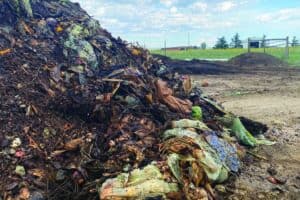Who were the Pilgrims and why did they come to America? From Smithsonian.com, the Church of England reformers came to be known as Puritans, for their insistence on further purification of established doctrine and ceremony. Those who held a more radical view were called separatists ó the same people we know as the Pilgrims.By 1607, the separatist congregations would leave England if they wanted to avoid arrest for their beliefs; thus, they escaped to the Netherlands. However, around 1618, the separatists decided to leave Holland. They were worried about war brewing between Holland and Spain, which might bring them under Catholic rule, if Spain prevailed.The label Pilgrim appears in William Bradford’s ìOf Plymouth Plantation.î Bradford was an influential leader of the colony they established in Plymouth.After the short 12-year pit stop, the Pilgrims left Holland in the summer of 1619. According to the Smithsonian, the Pilgrims left in the Speedwell and the Mayflower, the latter chosen for its steadiness and cargo capacity. But after “they had not gone far,” Bradford said in his book, the smaller Speedwell sprang several leaks and limped into port at Dartmouth, England, accompanied by the Mayflower. More repairs were made, and both set out again toward the end of August. Three-hundred miles at sea, the Speedwell began leaking again. Both ships put into Plymouth, England, where a handful transferred to the Mayflower, which finally hoisted sail for America with about half of the 102 passengers from Sept. 6.On Nov. 9, 1620, the Mayflower sighted the scrubby heights of what is known today as Cape Cod. Anchored offshore there on Nov. 11, a group of 41 passengers ó only the men ó signed a document they called the Mayflower Compact, which formed a colony composed of a “Civil Body Politic” with just and equal laws for the good of the community. This agreement of consent between citizens and leaders became the basis for Plymouth Colony’s government.From Nationalgeographic.com, in reality, the signing was probably more of an informal affair. Richard Pickering, chief historian for Plimoth Patuxet Museums said, ìThe document was carried from person to person: ëHereósign this!í There was also a bit of coercion involved. You werenít getting off the boat until you signed.îFrom the beginning, many factors negatively affected the Pilgrims’ survival in the new country. According to Neh.gov, mortality had been enormous at the Jamestown colony, where, by 1620, nearly 8,000 people had arrived, although the settlement was struggling to keep its population above a thousand. The first winter, people died from dysentery, pneumonia, tuberculosis, scurvy and exposure, at rates as high as two or three per day. The living were hardly able to bury the dead, let alone care for the sick. By spring, half of them had perished.However, two locals were specifically crucial to the Pilgrims’ ability to grow food, build shelters and form accords with the surrounding tribes. From Nationalgeographic.com, on March 16, a Native American strode boldly through the gate of Plymouth, raised his hand, and greeted them in English. His name was Samoset, and he had learned the foreignersí language from traders.Samoset introduced another Native American named Tisquantum, more commonly known as Squanto, who spoke perfect English. Years earlier, he had been kidnapped and taken to Europe as a slave. Squanto eventually gained his freedom and returned to North America as a guide.With Squanto serving as translator, the Pilgrims negotiated a peace treaty with Massasoit, leader of the Wampanoag ó a loose confederation of several area tribes, including the now-extinct Patuxet. It was that treaty that led to the fabled first Thanksgiving.As the Pilgrims celebrated their first harvest in November 1621, they fired their muskets into the air. Legend has it that Massasoit, fearing his allies were under attack, rushed to the scene with a group of warriors. Relieved to discover all was well, the story goes, the group stayed for dinner. More likely, Plymouth historian Pickering said, Massasoit and his men, who were accustomed to hearing gunshots from military drills, dropped by on a diplomatic mission, bringing along five deer as a gift.The Pilgrims were the first of tens of millions to come to America for religious and economic freedoms. According to History.com, repressive policies toward religious nonconformists in England under King James I and his successor, Charles I, had driven many more men and women to follow the Pilgrimsí path to the New World. Three more ships traveled to Plymouth after the Mayflower, including the Fortune (1621), the Anne and the Little James ó both in 1623.






